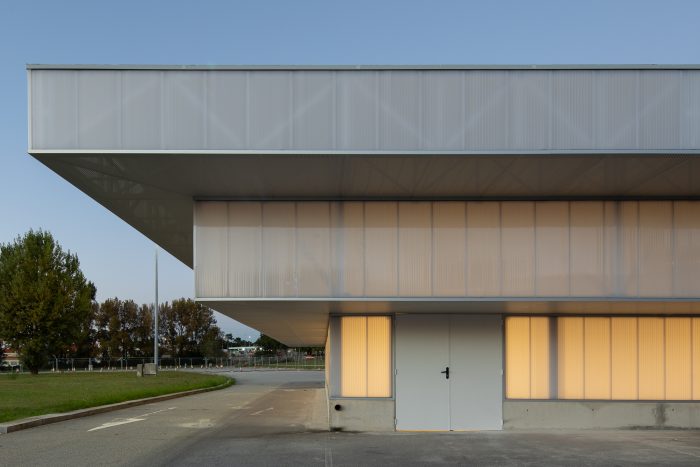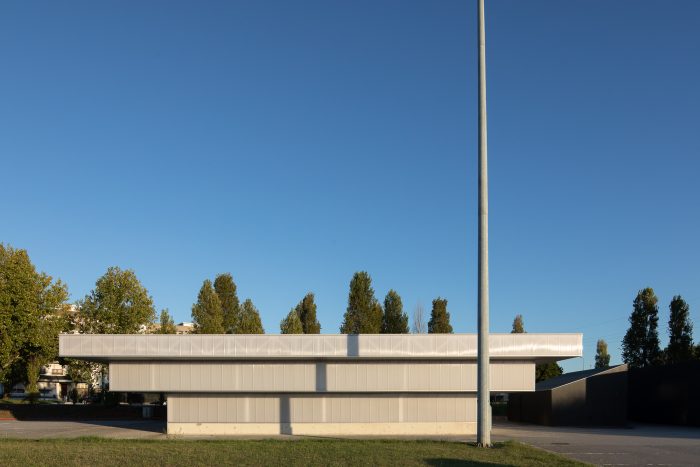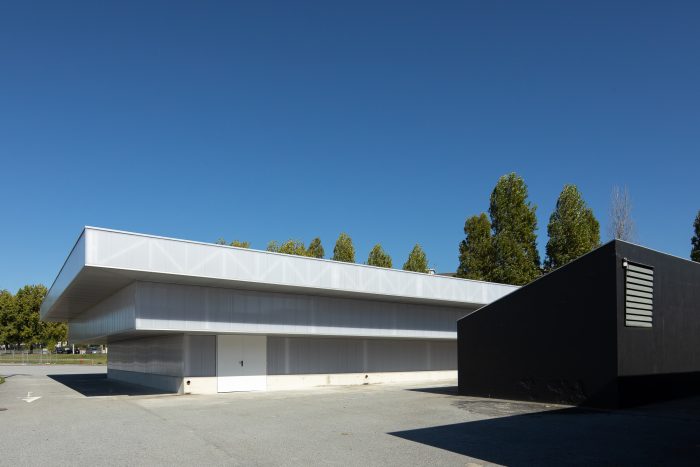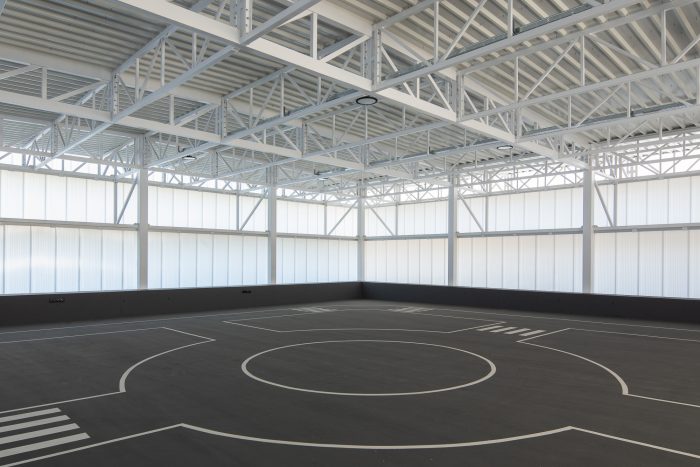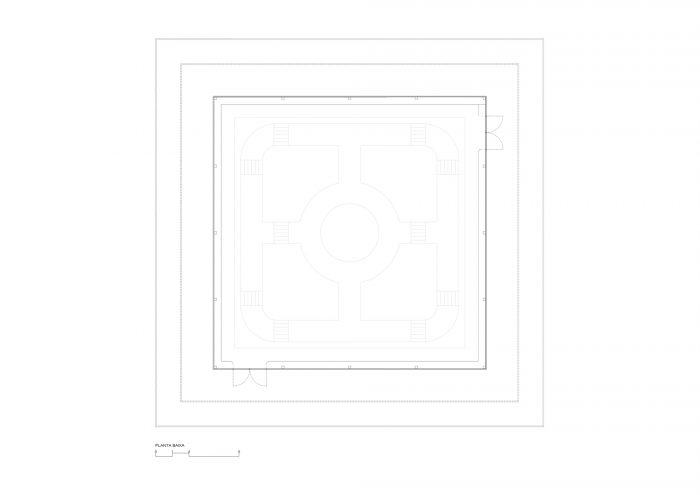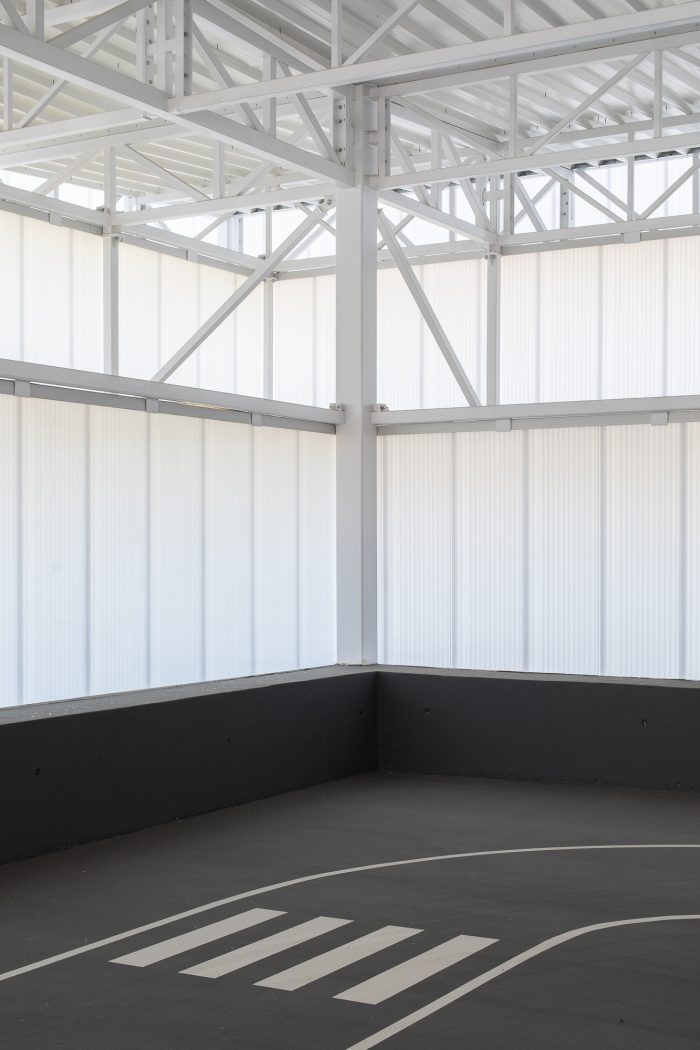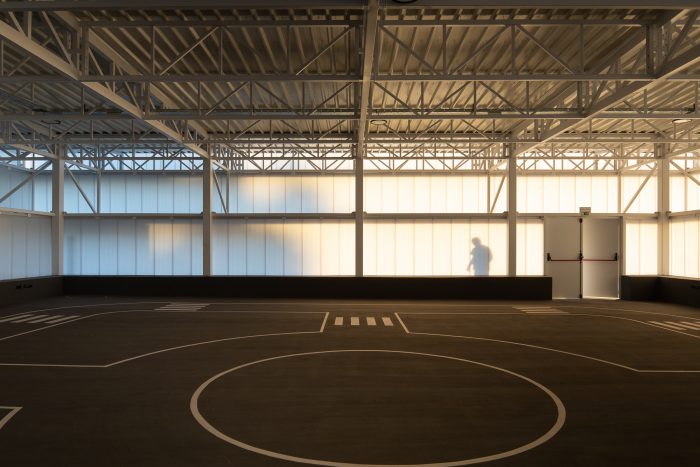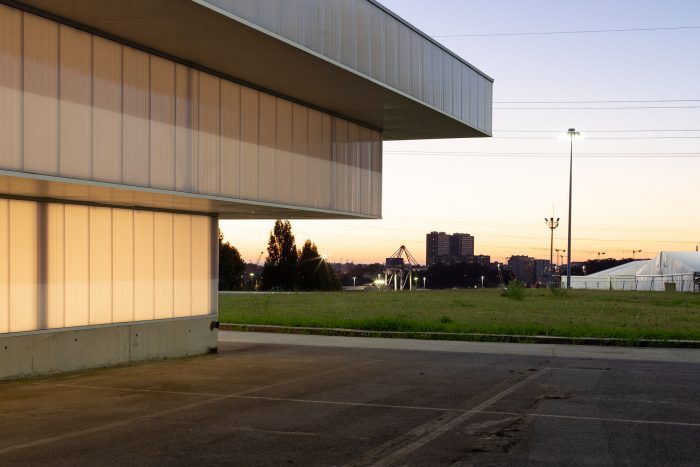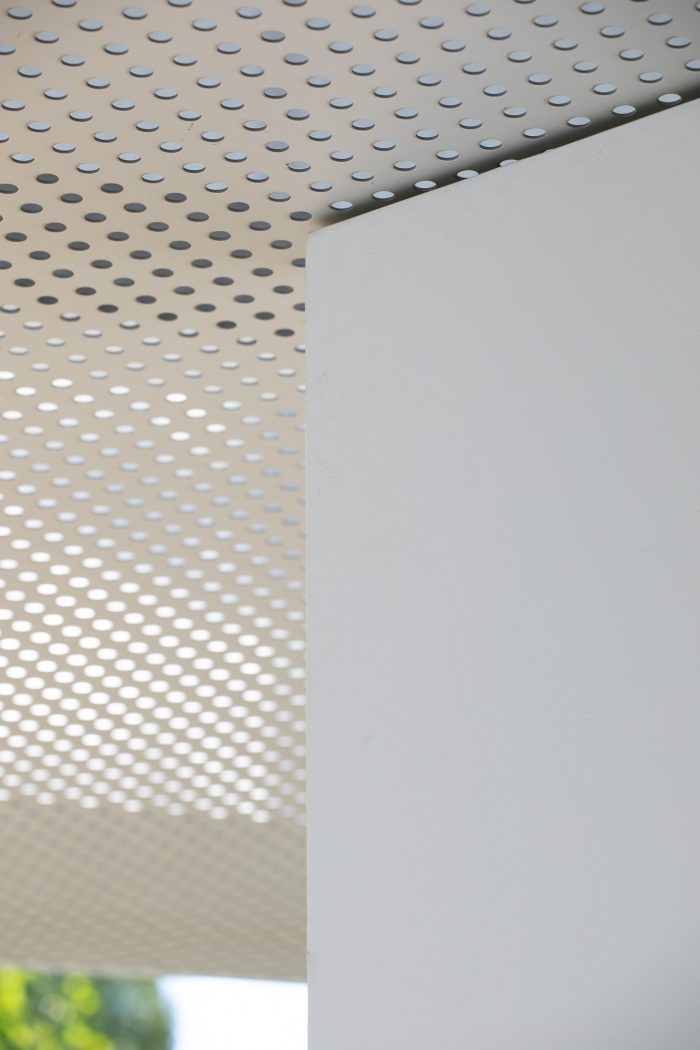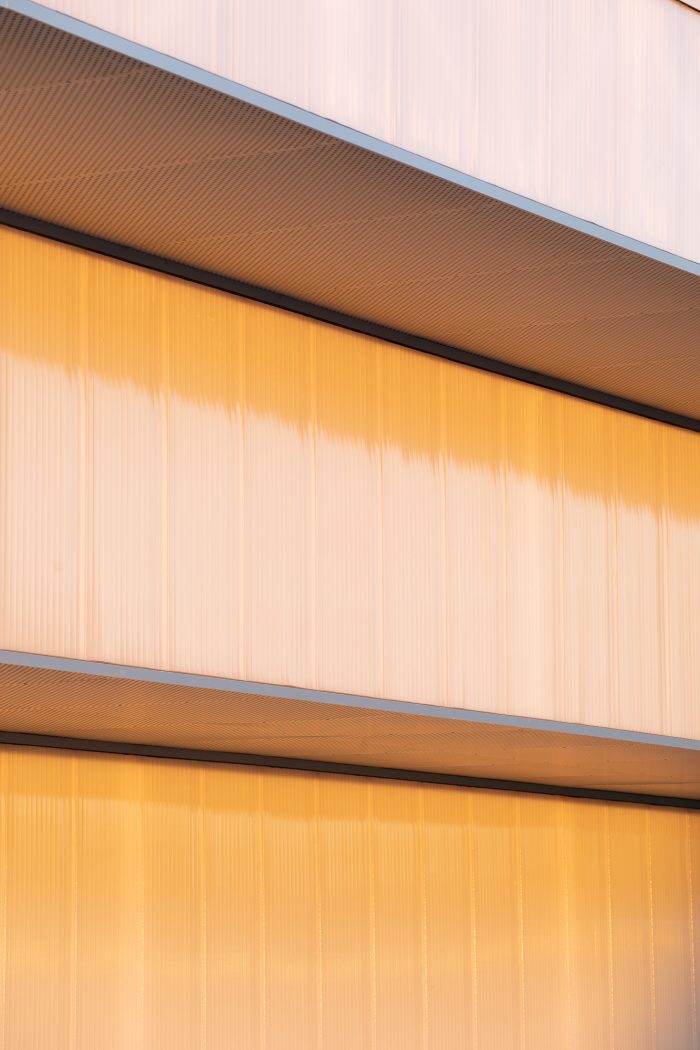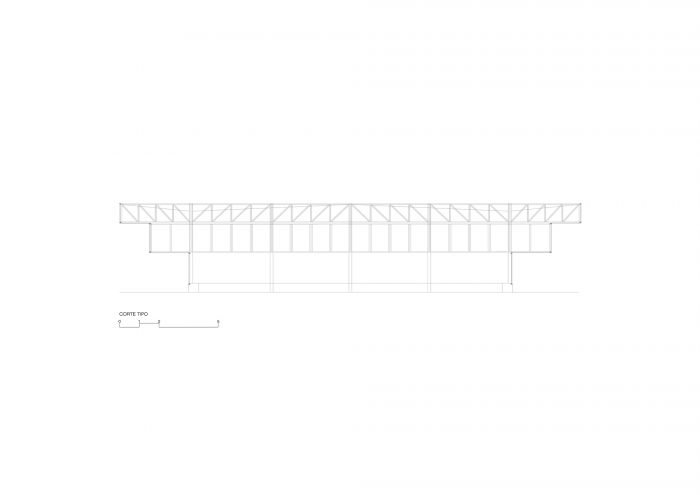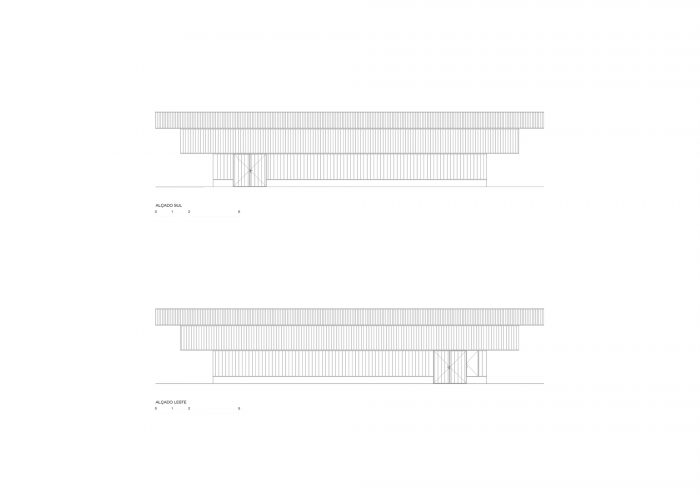Manhufe馆位于一组黑色(和红色)的建筑旁边,位于Matosinhos(波尔图)的一个停车场内,我们在几年前设计了这个建筑。
Manhufe Pavilion is located next to a set of three black (and red) buildings, located in a parking lot in Matosinhos (Porto) that we designed a few years ago.
与现有的两座建筑一起,它将被用来教导儿童公共和私人空间的特殊性。馆内将模拟城市街道和汽车流通,这样他们就可以学习基本规则–比如过马路,了解交通信号等。
Along with two of the existing buildings, it will be used to teach children the particularities of public and private space. Inside the pavilion, city streets and car circulation will be simulated so they can learn the basic rules – like crossing the street, understanding traffic signals, etc.
目的是要有一个生态友好的建筑,可以利用自然光和自然通风来减少能源消耗。建筑的形状源于这一目的。
The aim was to have a eco friendly building that could take advantage of natural light and natural ventilation to reduce energy consumption. The shape of the building arises from that purpose.
正方形的倒台阶金字塔之前已经由Edoardo Sianesi(纺织馆,米兰,1957年)和Pezo von Elrichschausen(Casa Nida,智利,2015年)设计过(可能还有更多…)。这种形状的 “负面 “版本可以在印度的许多阶梯井中找到。
The squared inverted step pyramid has been designed before by Edoardo Sianesi (Textile Pavilion, Milan, 1957) and Pezo von Elrichschausen (Casa Nida, Chile, 2015) (and probably more…). The ‘negative’ version of this shape can be found in many of India’s stepwells.
在这种情况下,使用这种形状是因为它能为夏季的太阳照射产生立面阴影,并能将悬臂的下层水平面挪作永久的横向通风系统。
In this case, this shape was used because it generates façade shadowing for summer solar exposure and enables the appropriation of the inferior horizontal surface of the cantilever as a permanent transversal ventilation system.
该建筑有一个混凝土基座(和地基),在内部变成了一个长凳。钢结构为倒金字塔提供了形式,它被固定在混凝土元素上。一个半透明的聚碳酸酯表皮涉及到钢骨架,允许自然光进入室内。
The building has a concrete base (and foundation), that turns into a bench on the inside. A steel structure gives form to the inverted pyramid and it’s fixed to the concrete element. A translucent polycarbonate skin involves the steel skeleton and allows natural light to come inside.
Architects: Guilherme Machado Vaz
Area : 256 m²
Year : 2021
Photographs :José Campos
Manufacturers : DAGOL
Collaborators : Inês Campo
Construction Firm : RBT – Eng. Edite
Steel Structure : PaviMetal – Eng. João Nuno Pais Costa


